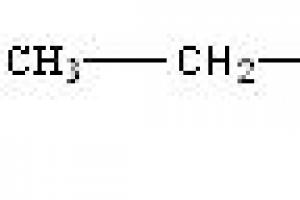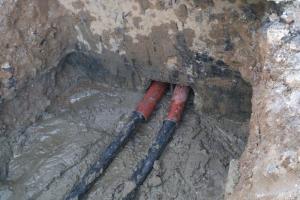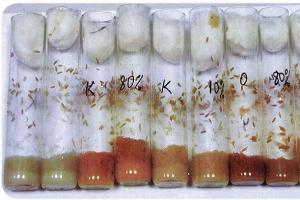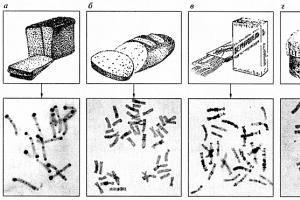Pipe tape is a modern sealant intended for use in water supply, sewerage, gas pipeline systems, as well as critical systems with aggressive and high-temperature environments. The tape is convenient, does not require additional preparation of the workplace, and is indispensable in situations of emergency pipeline repair and in the absence of sealing experience.
Types of tapes and areas of application
Sealing tape for pipes differs in composition, size, color, but most importantly, in the scope of application and winding method. In simple terms, tapes are available for external and internal use. “External” tapes are wound over the pipe, they are both an additional and the main sealant. Tape for pipe joints is relevant for detachable connections without threads and flanges, as well as for sealing pipeline bends, taps, plugs, fittings and other pipeline elements.
“Internal” tapes are applied to the threads, i.e. The area is sealed from the inside. When making a threaded connection, they use plumbing tape, which is much smaller and thinner than the external sealing tape and has slightly different technical and operational characteristics.
Let's look at them in more detail...
Sealing tape for pipe joints is a multilayer self-adhesive material, usually with a bitumen-polymer composition. It has waterproof properties, protects the pipe from corrosion, mechanical, chemical, temperature influences, and eliminates leaks.
Depending on the temperature of the transported medium and the place of sealing, the following are distinguished:
Summer ribbon
Operating temperature range - up to +300˚С. Suitable for high temperature environments, applied to areas located underground or indoors.
Winter ribbon
Operates at temperatures -200˚ to +100˚С. Designed for external work when laying a main or municipal pipeline.
Heat resistant tape
Retains its properties at extreme temperatures up to +1500˚С. Used for sealing critical systems, including oil pipelines.
Polymer-bitumen tapes are effective when laying heating mains and sealing not only the joint, but also a large straight section of pipe. Reliable, durable, environmentally friendly and convenient. Thanks to the elasticity and pliability of the material, it is possible to seal the required area the first time and quickly, which is important when the time frame for pipeline construction or repair is limited.
Apply sealing tape to a clean, dry pipe with the adhesive side facing inward. Winding is carried out as an overlapping spiral. It is important that the tape fits tightly around the pipe, does not bubble, and lies smoothly. Before each turn, the tape is slightly stretched and laid with a wide overlap, capturing half of the previous turn to form a double layer.
The service life of the tape for external work is about 30 years. This is an adequate figure for main pipelines that require 100% sealing.
FUM tapeand plumbing thread
These materials are intended for sealing threaded connections of plastic and metal pipes. Widely used in household pipelines for assembling and repairing gas pipelines, water pipes, installing plumbing equipment, connecting household appliances (washing machines, dishwashers, gas boilers, etc.)
FUM tape:
- Varies in width and thickness
- Effective for hot and cold water systems, operating temperature range is from -70 to + 200-250 ˚С
- Resistant to pressure up to 100 atmospheres, copes with pressure surges in the system and hydraulic shocks
- Most effective on plastic threads
- Suitable for temporary connections
- Shows good results as an alternative to rubber gaskets and O-rings

In addition to the fact that high-quality tape is not easy to choose, its disadvantages include two main ones - uneconomical consumption and difficulty in winding. Anyone working with FUM for the first time needs to make several test connections to get used to it, find out the number of turns for a specific thread, measure the flow rate and select the appropriate tape size for different types of work.
Another feature of the sealing connection with the FUM is the impossibility of adjustment. If, during assembly or operation of the thread, it is expected to unwind, even if only slightly, there can be no question of tightness. That is why FUM tape is chosen for simple, non-hazardous connections.
In addition, FUM tape does not tolerate vibrations. If the connection is subjected to it periodically, sooner or later it will leak.
Record winding is also a variant of sealing tape. This plumbing thread is intended for sealing threaded connections in natural and liquefied gas systems, cold and hot water, drinking water and compressed air. This thread is used to perform a wide range of household work related to the assembly of engineering systems, installation and connection of equipment. Including something as complex as a pumping station or double-circuit heating boilers.

Record thread is much more convenient than FUM tape, primarily because it is wound randomly - along the thread or crosswise. The simplest instructions are clear even to a beginner, and the thread does not slip or wobble on the thread. Due to the impregnating composition, it adheres tightly to the sealed surface.
Reeling Record:
- Instantly seals any connection
- Does not require preparation or even cleaning of threads
- Protects the connection from corrosion
- Does not contain plant components, synthetic and hygroscopic
- Suitable for small and thin-walled carvings
- Operates at temperatures from -60 to +120 °C
The shelf life of the connection with the Record winding is 20 years. If this sealant is used to assemble a pipeline with detachable threaded connections, then the need for additional external sealing disappears. Tests have shown that the winding can withstand pressure of 40-50 atmospheres and can be used in critical systems - for example, automatic fire extinguishing systems.
You can rewind the Record, directly from the manufacturer and at an affordable price!
Adhesive tape size: length - 3m/10ft, width - 25mm/1”, thickness - 0.5mm/20mil.
Electrical insulation degree: 800 Volt.
Material: silicone.

Permissible temperature range: from -60 to +260 degrees Celsius.
Withstands maximum permissible pressure: up to 5 bar.

The tape does not support combustion. It is waterproof and moisture resistant.

Silicone adhesive tape is designed for emergency repair of hoses, pipes, insulation of electrical connectors and terminals.
Once wound around the hose, the tape vulcanizes and becomes part of the hose, making the repair site resistant to re-damage.

Can be applied and adhered to wet, dirty and greasy surfaces.
In the event of unforeseen emergencies, it can be used for medical purposes - as a tourniquet to stop bleeding, or to fix limbs in case of injury.

Designed for storage in a vehicle or as part of a set of equipment for repairing hoses and pipes.
Possible order options
Latest reviews from Aliexpress
46 days until Moscow time from the date of payment! Packed in a cellophane envelope. We have such a tape in Leroy costs 450-500?. Once wound onto the hose, it vulcanizes and becomes part of the hose! An excellent solution for home and garden! I didn’t remove the star for the delivery time, because the price tag is good and the tape itself is of excellent quality!)

We were very surprised by the quality of the film. We thought that she would be barely alive, but it turned out that she stretches very well and accepts quickly previous form. Very soft. We didn’t even expect that we would buy a high-quality anti-leak film for that kind of money.
A good thing! For those who do not understand how to use it, you just need to understand the principle of operation of this tape. The tape is designed for overlapping winding in two to three layers. Do not forget to degrease the surface on which we apply the tape. By stretching and subsequent heating (the warmth of your hands is enough), the polymerization process is activated and after 10 minutes, we get an almost monolithic rubber structure. It will be impossible to separate the layers after this. Follow all these principles and you will succeed)

The goods arrived exactly 2 months before Kazakhstan! In general, the tape looks and feels like double-sided tape. . . I don’t know how it will turn out in reality. . . The protection was already ending, I wrote to the seller to extend it, but he ignored it. . . For this, minus 1 star!!!
and so the seller’s delivery was fast in 20 days, I took 2 at once, just in case, the price is for 2 pieces 3. $14 stretches well, about 3 times, sticks to itself well, so I think it should fulfill its functions

The order arrived in two weeks, everything is fine, I haven’t tried it yet, I think everything will be fine. Thank you to the seller for the fast delivery and well-packaged goods!
Delivery was very long, almost two months. Package torn, one roller was lost. The seller needs to pack the goods better. I have not yet checked the tape itself for leak retention. I'll write back later.

The packaging is good, the product is undamaged, the description seems larger, the width is 1.3 cm. Haven't used it yet. Thanks to the seller.
everything according to the description has not yet been tested in practice, it’s better not to will come in handy, and let it be at hand

July 25, 2016Delivery is fast - it reached Kyiv in 16 days. Haven't used it in practice yet. Thank you to the seller for your promptness.
Specialization: philological education. Work experience as a builder - 20 years. Of these, for the last 15 years he led a team as a foreman. I know everything about construction - from design and zero cycle to interior design. Hobbies: Vocals, psychology, quail breeding.
Greetings, my dear readers!
Many people know that when creating and repairing various utilities, it is important to reliably seal all elements. The reliability and efficiency of systems depends on this. Today I will tell you how to choose a sealant for water supply, sewerage, heating and smoke exhaust pipes.
Category No. 1: materials for sealing water and sewer pipes
There are several types of seals for sewer and water pipes.
Sealing tapes

Self-adhesive tapes, specially created for sealing pipe joints, are a modern means of sealing. They have such advantages.
- Self-adhesive films are easy to use and highly effective.
- Sealing tapes on a durable polyethylene base have good performance characteristics.
- They are universal, they can be used to seal different types of pipelines (sewage and water supply), because they have anti-corrosion and dielectric properties.
- Tapes can be used not only for sealing pipe joints, but also for sealing system elements: inserts, plugs, rotary corners, etc.
- Prepare its surface for winding the sealant: it must be cleaned of dirt, dust and dried.
- When applying the tape to the pipe, make sure that it is constantly tensioned; in addition, do not allow wrinkles and folds to form.
- Wind the film, creating a 50 percent overlap in a spiral. As a result, the entire sealed surface should be under two-layer tape protection.
Plumbing tape has poor UV resistance. As a result, if the sealed section of the pipeline is exposed to the sun, it should be additionally protected from ultraviolet radiation over the film.
Silicone compounds

Silicone-based plumbing pipe sealant is another common sealant. Rubber silicone compounds are a composite of different substances that provide high quality sealing. They have good adhesion to compacted surfaces and do not require pre-treatment with a primer.
I would like to warn you that, based on the type of hardener, silicone sealants for sewer pipes are divided into the following types:
- Acidic compounds. Their price is relatively low. However, they should not be used to seal certain surfaces that may react with acids.
- Neutral analogues. They are universal and can be used for all types of materials from which pipes are made.
Silicone sealants are used to seal both metal and plastic pipes, but only sewer pipes.
Following the vulcanization of silicone gel, after its application, it is transformed into a material similar in its qualities to rubber. This process is directly influenced by the moisture contained in the air.
At the moment, sealants of the Tytan, Moment and Sinicon brands are of the highest quality, which is why they are popular. They are used not only for sealing joints between metal and plastic pipes, but also for repairing fistulas and cracks.
I'll tell you how to use them:
- Before sealing the surface, make sure it is dry and clean.
- Next, carefully spread silicone gel over the interface of pipes or system elements.
- The composition should not be smeared further. Apply it in 2-3 layers, slightly going beyond the boundaries of both sides of the joint.
- It is extremely undesirable to moisten the pipe not only before and during work, but also until the polymerization of the silicone is complete.

It is extremely easy to squeeze out and distribute the sealant - using a special mounting gun. If you don't have one, you can use a regular hammer.
Insert its handle into the tube and press this kind of piston.
Epoxy resin

It serves, like adhesives based on it, as the most used product for water and sewer pipes:
- In water supply and wastewater systems, epoxy resin is used for cast iron and ceramic pipelines, which require a more durable interface than plastic counterparts.
- The advantages of this sealant include its long service life and resistance to more than fifty chemically aggressive compounds.
- “Epoxy” is not resistant only to sulfuric and nitric acids, hydrogen peroxide, methyl ethyl ketone, acetone and fluoride compounds.
Hemp, jute rope

Another common sealant for water pipes made of metal and sewer analogues made of ceramics and cast iron is jute or hemp rope, as well as resin strand (heel). They are used to seal the sockets of networks. I would like to give you some advice - using resin-impregnated rope is a more preferable option.
Previously, only jute impregnated with resin was used to seal household communications. The principle of its operation is the same as that of self-adhesive tapes, but they are fixed differently.
Jute is an ordinary twine. However, if it is impregnated with bitumen or resin, it becomes a durable and strong seal for the sockets of ceramic and cast iron sewers.
Other means
- Cement is a common element in some sealants. Most often used for the production of asbestos-cement mixtures and for caulking cast iron sewer pipes.
- Asphalt mastic and an analogue from petroleum bitumen are used for the production of casting compounds. They are needed to seal the joints and sockets of ceramic networks. The following mastics are used for different types of pipelines: talc-bitumen, asbestos-polymer-bitumen, rubber-bitumen, polymer-bitumen, etc.

- Technical sulfur is used to seal the sockets of cast iron sewer pipes. Before use, it must be crushed and then heated until melted. It should be said that this method is now rarely used, because sulfur has a very pungent and unpleasant odor.
Category No. 2: seals for heating systems
We all have to install a new heating network, change radiators and thread seals shortly before the heating season. Find out from my article which sealants can now be used for this.
Flax tow

At the moment, there are many seals for radiators and pipes of heating systems that belong to different generations. One of the oldest sealants is flax tow, planted on paint.
However, this material was good many years ago; now it is of little use. I'll explain why:
- Linen is natural, i.e. degradable, therefore a short-lived sealant. Previously, cast iron radiators could be used quietly for 40 years. However, now the service conditions of heating networks have become different. This sealant will have to be changed after 3-4 years.
- Current paints have a composition that is different from that of their Soviet counterparts. They are absolutely not suitable as impregnation of flax fibers. Silicone is also not suitable for this. It contains vinegar, which causes thread corrosion.

- Modern high-rise buildings are not Khrushchev buildings with 2-5 floors. During pressure testing (testing of pipelines for strength and tightness) and operation of the network of such a building, a pressure of up to 16 atmospheres is turned on. Linen sealant can be used at pressures up to 8 atmospheres.
As a result, the connections on the flax seal burst due to its swelling or cannot withstand the operating pressure in the heating system.
For apartments in a 1-5-story apartment building, linen sealant can be used. There are only a few connections in the dwellings.
In your own home or cottage, the number of threaded connections on pipes can approach several hundred. It is highly undesirable to use flax sealant in them.
More modern means - polymer threads and anaerobic sealants

The photo shows the sealing of a pipe fitting with a polymer thread.
Flax planted on paint is gradually becoming a thing of the past. Now there is a more modern, reliable, safe and durable method of sealing pipes and elements of heating systems. It is based on the use of polymer threads and anaerobic gels.
- The anaerobic sealant for heating polymerizes in contact with the metal, completely filling the entire thread. The connection will last as long as the pipes, without replacements or leaks. He will not be afraid of high pressure and temperature, shock and vibration loads.
- Polymer threads are also an excellent sealant for threaded units of heating systems. They are suitable for sealing metal, PVC and polypropylene pipes, the mating of which is undesirable using gel materials. The operating temperature of the threads is not limited, and dismantling is easy.

In the lower table I present to you the technical characteristics of high-quality anaerobic gels from the Russian company RST (Region Spetstekhno).
| Name | Purpose | Characteristics |
| Gel "Santech-master" (green) | Anaerobic sealant for metal flange and threaded connections up to 1.5 inches. | Polymerization period: 20/30 min. Application temperature from +15º. Dismantling is easy. Volume: tube – 60 g, blister – 15 g. Operating temperature range -60/+150º. Ingredients: dimethacrylate polyglycol and modifiers. |
| Gel "Santech-master" (blue) | Anaerobic sealant for metal threaded and flanged connections up to 2 inches | Polymerization period: 15/20 min. Installation temperature from +15º. Dismantling requires medium force. Volume: tube - 60 g, blister - 15 g. Composition: |
| Gel "Stop-master" (red) | Anaerobic sealant for metal flange and thread connections up to 3 inches. | The polymerization period is 5 minutes. Installation temperature +5º. Heating is required for dismantling. Volume: tube - 60 g, blister - 15 g. Composition: dimethacrylate polyglycol and modifiers. Operating temperature range -60/+150º. |
Category No. 3: sealants for furnace equipment
Furnace equipment may crack due to temperature changes.
What are furnace sealants used for?

- Through cracks can reach the chimney. Then soot on its walls and increased fuel consumption will not be all the problems. Harmful combustion products will begin to penetrate into living rooms.
Problems with a chimney are not so common when it is made of high-quality ceramics or a sandwich, but they are dangerous. For optimal traction, its channel must be sealed. This directly affects fire safety. Why? - Soot often settles on the chimney walls. If it is not cleaned in a timely manner, it may ignite when exposed to air oxygen. The ignition temperature will be quite high - up to +1500º. If the thermal insulation of a heated pipe is poor, the floors or roof will catch fire.
- Incomplete sealing of the smoke exhaust channel also leads to the gas burner fire going out. This problem is widespread when using gas boilers.

To seal cracks and join channel elements, it is best to use paste sealant for chimney pipes. The basis of such materials are different polymers that give different technical characteristics to the seal.
They are packaged in tubes of different configurations and volumes. There are packages that look like tubes of toothpaste. The sealant is simply squeezed out of them.
Tubes for mounting guns are also available. In this case, you need to cut off the spout on the cone of the lid, insert the sealant into the device and squeeze out the required volume of paste using the trigger lever.
Types of material

According to the form of release, high-temperature seals are divided into two- and one-component ones.
The first of them must be mixed before use. In most cases, they are used by professional builders.
This happens due to working conditions: when mixing components, you need to measure them very accurately. The permissible maximum error is only one gram.
In addition, if a small proportion of components accidentally gets into each other, a reaction begins, and the viability of the resulting mixture is only a few hours. Based on all this, for non-professional builders, I recommend using ready-to-use paste sealants.
Based on the area of application and withstandable temperatures, oven sealants are divided into two groups.
- Heat-resistant seals are used for areas that heat up to +350º. The scope of their use: external surfaces of fireplaces and stoves, masonry joints (however, not between the masonry and casting of the stove). They are also suitable for sealing joints between parts of hot water supply and heating systems, sandwich chimneys and bricks with roofing.

- Heat-resistant and heat-resistant analogues are able to resist extremely high temperatures - up to 1500º. The scope of their use is in fireplaces and stoves, areas where brickwork and furnace casting meet. In boilers they are used in furnaces and combustion chambers. In chimney ducts - at seams and joints, including those running immediately after the outlet pipe.
These pastes can be used in direct contact with an open flame. However, then the sealant must have an additional characteristic on the packaging: “fireproof” or “fire resistant”.
Heat-resistant seals
This type of high temperature seals is made on a silicone basis. The temperature regime that the composition can withstand may vary based on the exact composition of the paste. Thus, to increase thermal resistance, silicone is modified with iron oxide.

This paste holds temperatures well up to +250º, with a short increase to +315º. Iron oxide colors the sealant in a brownish-reddish tone.
Therefore, when using a similar composition for a brick stove or fireplace, you will not spoil their appearance, it will not be visible. It can also be used to seal the joints of heating pipes. However, aesthetics will suffer here.
Based on its composition, silicone material can also be neutral or acidic. The latter analogues dry out and release vinegar. As a result, such sealants are prohibited from being used for cements, concretes and metals that are not resistant to corrosion.
In this case, a reaction occurs between the base and the seal, which leads to the appearance of a layer of oxides or salts, which destroy the seal. Then the seams and joints stop playing their role, beginning to let air and moisture through.
Cement, concrete and metal can be sealed with neutral silicone-based sealants, because... when cured, they release alcohol and water. The main properties of neutral heat-resistant sealants are below.

- UV resistance. Thanks to this, they can be used outdoors, for example, to seal roof penetrations.
- Moisture resistance. This parameter makes it possible to use this composition for chimney ducts. For example, seal seams and cracks in roof passages, at the junctions of its flooring, and seal threaded connections when installing heating.
- Good adhesion to substrates made of different materials: concrete, brick, glass, metal, plastic, ceramics, wood.
- After hardening, the seal retains some elasticity and therefore does not crack under mild vibration and deformation. However, plasticity also has its drawback - paint does not adhere to silicone sealant. It peels and cracks.
- The drying period of the material can be several hours or several days. This parameter is affected by the composition of the sealant and its storage time. The fresher the sealant, the faster it dries. The drying period is indicated on the packaging.

Manufacturers measure this parameter at a humidity level of 50 percent and a temperature of 23º. Changing their values shortens or lengthens the drying time. The lower the humidity and temperature, the longer it takes for the sealant to harden.
Polymerization of the sealant begins from its surface and continues inward; it requires air moisture. Based on this, do not make the seams deeper than necessary; the silicone at the bottom simply may not harden. In this case, the joint or seam will allow water or smoke to pass through.
To ensure that the compactor has good adhesion to the base, I strongly advise you to prepare it.
- First, clean the surface down to the very base: remove dirt, dust, salts and oxides.
- Next, wash it with water and thoroughly degrease.
- Silicone-based sealants must not be used on wet surfaces. Therefore, wait until the base is completely dry before sealing.
- The silicone seal holds well on a smooth surface. However, to improve the adhesion, I recommend that you sandblast it, emery cloth or other abrasive. Then wash the base again, wipe with solvent and dry. Next you can work with the sealant.
All silicone-based oven materials are painted red or brownish-reddish.
Heat-resistant analogues
The universal heat-resistant seal is made on the basis of silicates. The operating temperature regime that it can withstand is up to +1300º, and can withstand short-term exposure up to +1500º. This type of furnace sealant can be used in areas of direct contact with an open flame. In this case, the packaging of the seal should be marked: “fireproof”.

Heat-resistant seals are used:
- for repairing leaks in heating boilers;
- for sealing chimney pipes and sealing cracks in them;
- for sealing areas where brickwork is adjacent to furnace casting;
- for sealing fireclay lining of furnaces;
- When installing a chimney made of sandwiches, it is also highly advisable to coat their modular joints with a similar product.

The exception is pyrolysis and condensation boilers; at their outlet the smoke temperature is up to +150º. Here you can use heat-resistant seals.
When you plan to make the chimney duct or other element collapsible, apply sealant only to the joints. By loosening the two sections and crumbling the seal, you can separate them.
If you apply a layer of the product over the entire surface, the structure will become monolithic. You won't be able to take it apart without damaging it.
Silicate-based materials have good adhesion to stone, brick, concrete, metal, and cement mortar. However, I warn you that they are not firmly held on a smooth plane, as a result of which such surfaces require abrasive treatment before applying sealant.
I would also like to note one point - the sealant can be applied only in the positive temperature range: +5/+40º. The best option is a temperature of at least +20º, in this case the composition dries faster.

Having hardened, the heat-resistant composition creates a strong and rigid, i.e. not elastic seam. Based on this, silicate sealants can be used in areas that are not exposed to vibration or are subject to it to a small extent. Otherwise, the material will crack.
However, plasticity has its advantage - it makes it possible to paint the sealant. The silicone composition is distributed using a mounting gun and is no more than one centimeter thick.
Please pay special attention to the fact that some types of heat-resistant seals, if they come into contact with the skin, can cause chemical burns. Based on this, when working with your hands, wear rubber gloves and be careful.
Fire-resistant and heat-resistant oven sealants are painted black or gray. They have no other colors.

- They are not pure sealants, but rather a sealing adhesive.
- These products are transparent and can withstand temperatures up to +200º.
- Such compositions are chemically neutral, i.e. they do not react with salts and acids. The drying period is not affected by humidity and temperature. Thanks to this, they can be used outdoors and during the winter season.
- Sealing adhesives are waterproof. Therefore, they can be used in rooms with high levels of humidity - in a shower, bath, bathhouse, etc.
- The relative disadvantage of such compositions is that they are not high-temperature.
Of these sealants, I can recommend you the “Fix All” brand sealing adhesive from the Soudal company. It is not directly related to heat-resistant analogues, but is perfect for repairing leaks, cracks in heating networks, as well as hot water supply, both in the pipes themselves and in the fittings.
Popular product brands

Almost always, manufacturing companies write on the packaging of heat-resistant seals their main purpose. For example: “sealant for chimneys, fireplaces and stoves.” So, you can't go wrong with your choice.
- "Soudal-C". The Belgian company Saudal produces a diverse range of sealing materials. These include heat-resistant analogues, as well as heat-resistant stove and fireplace seals “Soudal-Calofer”. Such compositions are painted black.
- The Penosil company produces heat-resistant sealant for Penosil/+1500 ovens. It is black in color and can withstand temperatures up to +1500º. It polymerizes within 15 minutes.
The company also has heat-resistant red analogues that can withstand temperatures up to +300º. They are acidic, so they cannot be used on concrete, cement and metal. - In the middle price segment you can also find seals that are of good quality. For example, heat-resistant sealants of the Tytan and Bau-Master brands.
Under the Titan brand, a group of companies from Poland, Selena-Group, produces professional-grade construction and finishing materials, including oven sealants. They are standardized and have DIN and ISO No. 9001 certificates.
The Tytan high-temperature seal is modified with fiberglass; it gives the material a high degree of gas and smoke impermeability. It is able to withstand temperatures up to +1250º. This composition is suitable for chimney pipes and stoves.
Conclusion

Without pipe sealants, the effective operation of many utility networks is impossible. Depending on the type of network, different types of seals should be used.
If you watch the video in this article, you will learn more information. Ask your questions in the comments.
So I say goodbye, and good luck to you in your endeavors!
July 25, 2016If you want to express gratitude, add a clarification or objection, or ask the author something - add a comment or say thank you!
The elements that heat pipelines are expensive. But this does not prevent them from being very popular. These elements can warn when the pipes are defrosting. Of course, if you use them, the cost will be less than replacing the pipelines later. Basically, these elements will automatically respond to temperature, which is very convenient.
The main elements for this are cable and tape.
As a rule, heating tape or cable is used to heat pipelines that are intended for cold or hot drainage and water supply. Of course, the pipelines that are designed to supply hot water will not freeze. However, to avoid heat loss, heating tape should also be used. It will perfectly prevent heat loss.
If we talk about cold water supply, then this tape gives an excellent effect. The heating system will allow the pipeline to be built at a shallower depth. This will allow you to save a lot, since excavation work will be much smaller, and the tapes will help protect the pipes.
Market Review
 Insulating tape for water supply and heating pipes
Insulating tape for water supply and heating pipes There are different types of tape systems. They will differ in the technology used to make it and in their technical characteristics. Let's look at what types of tapes there are.
Stranded
 Pipe Sealing Tape
Pipe Sealing Tape
This tape is made of glass fiber. A large amount of wire is fixed to it, which is made of a material with high resistance. Typically, nichrome made with an organosilicate composite is used. This type will be equipped with low-temperature terminals. This is needed to connect the power source.
Heating atel Tapes are made using high-tech methods, so they have a certain length. You will also need to install a thermostat through the system, which will monitor the temperature of the cable so that the pipes do not overheat.
Heating tape
 PVC Pipe Adhesive Tape
PVC Pipe Adhesive Tape Self-adjusting tape
This pipeline heating system is made of copper conductors. They are installed in parallel. Between them there is a special material that should change its resistance. Depending on the temperature, the resistance will change. This is located on the outer armor shell.
The main advantage is that to heat pipelines there is no need to install special temperature sensors and temperature control devices. The self-regulating cable will evaluate the temperature itself.
These tapes are quite simple. They are sold by the meter or in reels. Connect to the network using simple control devices.
Helpful advice. To install the heating tape in a spiral manner, do not allow the edges to overlap. This is dangerous because it can lead to overheating.
Infrared film
This material is quite new, high quality and very promising. Infrared tape for pipelines consists of a conductive polymer film, which in turn consists of a carbon composition with the copper wire method discussed above. The heating effect is based on the fact that infrared radiation is transmitted directly to the heating cable.
Infrared tape requires additional thermostats and temperature sensors. They also need to be covered with an additional layer of thermal insulation.

Required power
To calculate the required power of heating tape for pipes, and how much it is needed, you will need to take into account some factors:
Pipeline diameter.
The depth at which you plan to lay.
It is necessary to calculate the required temperature difference between the pipe wall and the external environment.
Length of pipeline to be heated.
Type of seal and installation method
 PVC tape for pipes
PVC tape for pipes Operating mode
Helpful advice. If you increase the layer of tape, you can increase the protection of the pipe from mechanical pressure. You can buy them in good quantities, but with less power. Over time, you can save on energy costs using these strips.
 Heat-shrinkable tape for heating pipes
Heat-shrinkable tape for heating pipes You will also need to take into account the operating mode of the heater:
1. A continuous heater will be able to maintain the required temperature in the pipe. Typically this mode is used for hot water supply pipelines.
2. Periodic mode - from time to time allows the pipes to cool to ambient temperature or decreases to the desired value, which is set in advance.
The required amount of material can be calculated using special formulas established by manufacturers.
Installation instructions
 Adhesive tapes (adhesive tapes)
Adhesive tapes (adhesive tapes) Installing a pipe heating tape system is quite simple. The desired cable must be pressed against the pipe and secured with aluminum tape (see). It also provides additional thermal insulation.
When installing the tape, you need to be careful about it. It is sensitive to damage, and the cable must not be crossed or overlapped to prevent it from breaking. This applies to heating cables.
The self-adjusting tape is not as sensitive. It is more difficult to break, since it is not very afraid of intersections and overlaps.
As soon as it is installed, you need to immediately take care of a layer of additional thermal insulation and, in some cases, you need to install a waterproofing layer. Temperature sensors must be installed in the main sections of the water supply system. They are easy to install, you just need to secure them with adhesive tape on the pipe.
When installing in winter, you need to remember that the systems will become rigid and flat. But in this case, you can connect the cable to the network. The system will warm up slightly and become more flexible, allowing installation to continue.
Typically, the heating element for the pipeline can be installed separately inside the pipe. This will make installation more difficult, but the efficiency of this device will become greater.
Such a system will allow you to consume less electrical energy. With an internal cable heating system, you will heat the liquid, not the pipe walls.
The technology by which pipelines are heated has only recently begun to be used. Although, heating cables are considered obsolete. But tape is the material of the future, as many experts say. And, indeed, it is very promising, since many of its variations have already appeared and it is quite reliable and durable.
Relieve pressure in the pipe section being repaired
Remove all oil, grease, paint and sealants from the area being repaired (see Preparation Methods below)
Wear the rubber gloves included with the repair kit (they are easier to put on when your hands are dry)
Open the foil package and drop the contents of the pouch into a bucket of water or pour water directly into the pouch. For better impregnation of the tape, remember the tape for 20-30 seconds. If water was poured into the bag, give the tape 1 minute to soak.
Remove the protective film from the acrylic pad and apply the pad to the break area
Wrap the pipe with siloplast over the lining clockwise, starting from the break point, constantly keeping the tape taut. Continue winding until 5 centimeters of tape are wound in both directions from the breakout point. The number of turns is 5-6, for pipes with high pressure 8-10 turns. (Use the entire tape as it cannot be used again once the package is opened)
Continuously twist and press the tape clockwise for 6-7 minutes until the resin puffs and bubbles (this is a natural process before curing)
After the bubbling stops, the tape will become very sticky and the gloves will be difficult to come off, which means the process is complete (at low temperatures this will happen a little later than at high temperatures)
Allow 30-40 minutes for final hardening (at 21C). In lower temperatures this will be longer (but no more than 24 hours in sub-zero temperatures)
After hardening, the tape can be puttyed or painted over if desired.
Surface preparation:
You need to get 10 centimeters of a clean surface (around the entire pipe), taking the damage site as the center. If the surface of the pipe is covered with rust, remove this layer. You also need to remove the paint, any sealant and everything else (preferably using sandpaper or a knife) - we only need the bare pipe.








